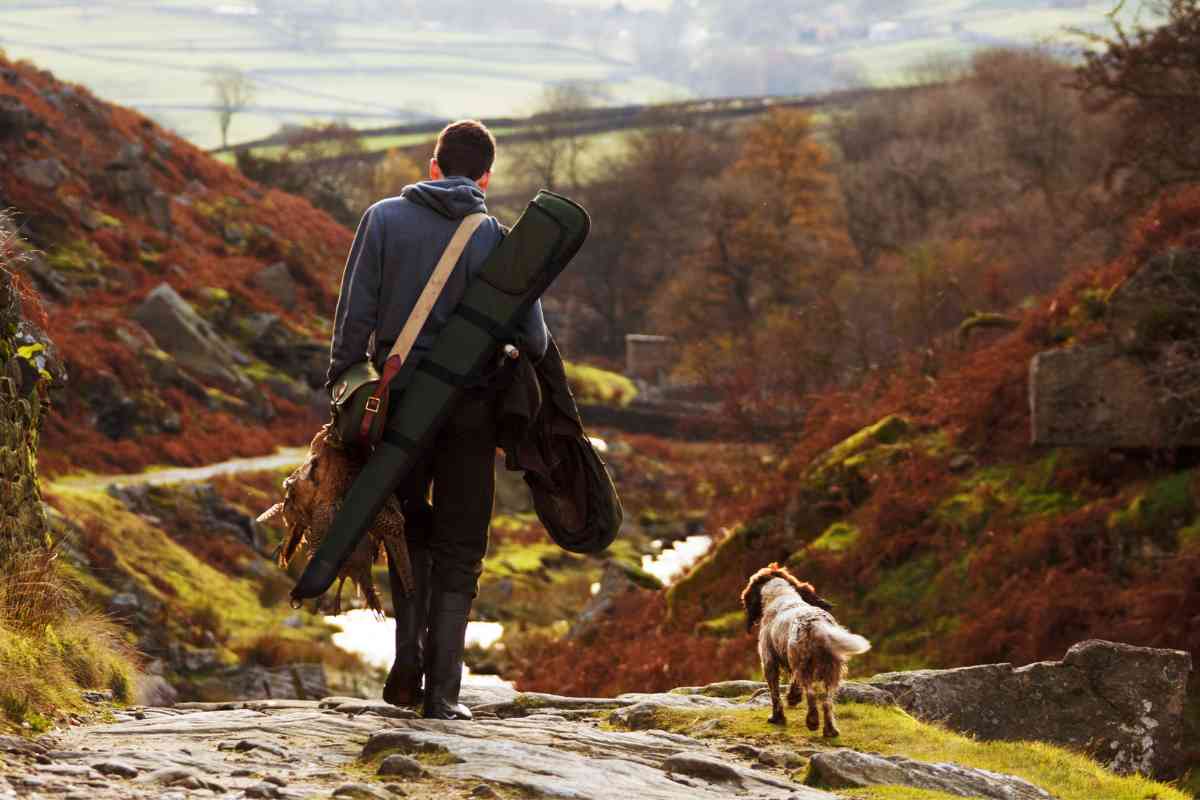The 5 Must-Have Weather Tools For Every Serious Hunter
The right weather can mean the difference between hitting your target or missing your target. So, what are the best weather tools for hunters?

What are the best weather tools for hunters?
The best weather tools to help you determine the perfect conditions for hunting include forecasts, radar, barometers, wireless weather stations, and anemometers. By choosing these tools, you can ensure that most of your hunting trips are successful.
Changes in the weather have a major impact on buck behavior, influencing your chances of landing a mature deer by a significant percentage.
Variations in barometric pressure, wind direction, wind speed, and other weather conditions can affect your chances of finding and bringing down a sizable buck.
It is, therefore, imperative to ensure that you have information on these variables at your fingertips and ensure that your hunting trips go off successfully for the vast majority of the time.
Weather tools like forecasts, barometers, radars, anemometers, and others can help you determine the perfect weather conditions for hunting deer and other game and significantly improve your chances for a successful hunt.
Weather Forecasts
The right weather information is crucial for determining the best days and times to track and hunt deer successfully. This is because deer and especially mature whitetail bucks are extremely sensitive to changes in weather conditions and, specifically, rises and drops in temperature.
Data from the national weather service has shown that the colder the weather is, the higher your chances for sighting deer are.
This is because deer need more food to stay warm in chilly temperatures and are, therefore, more likely to leave their lairs in search of sustenance. In addition, cloud cover also has a significant impact on deer movement.
Deer are least visible during rainy weather and most visible on cold, clear mornings. Already highly nocturnal, deer will tend to avoid high daytime temperatures and only come out at night or on cold mornings when temperatures take a dip.
Weather forecasts can provide the information you need to plan a successful hunt. Large-scale hunting data has found that a drop of up to ten degrees in temperature can increase deer movement by up to 55%.
It is therefore imperative to pay attention to weather forecasts in your area in order to determine the best days for hunting.
Barometers

Barometric pressure simply refers to the amount of pressure that the atmosphere or air molecules exert on the earth’s surface. It fluctuates daily due to air temperatures, wind patterns, and the earth’s rotation.
These variables can create either a high-pressure or low-pressure system.
High-pressure systems cause air to press closer to the earth’s surface, resulting in warm and clear weather conditions. Low-pressure systems push the air further up into the atmosphere, resulting in colder days with a high chance of precipitation.
Deer are more likely to be on the move during cold and clear days as they search for food in order to stay warm.
Cold weather conditions are usually the result of low-pressure systems, and it is, therefore, important to pay attention to barometric pressure readings in your weather forecasts in order to determine which days will be best for hunting.
In addition to using weather forecasts to determine barometric pressure, you can also invest in a useful tool known as a barometer in order to take your own pressure readings. This is especially important if you are planning on spending a significant amount of time on your hunting trip.
There are two basic types of barometers i.e., analog and digital barometers.
Analog Barometers
An analog barometer is a weather tool that measures barometric or atmospheric pressure and displays the results by moving a needle over a graduated scale as opposed to an LED screen.
Analog barometers can be further categorized into two; these include liquid barometers or weather glasses and aneroid barometers.
Liquid barometers, which are also known as weather glasses or mercury barometers, measure atmospheric pressure by adjusting the level of mercury inside a tube. Aneroid barometers use the expansion of a piece of metal to move a needle and indicate barometric pressure.
Digital Barometers
Digital barometers use pressure-sensing integrated circuits known as micro-electromechanical sensors (MEMs) to sense atmospheric pressure. Changes in barometric pressure affect the strength of the electric current flowing through the barometer and causes fluctuations in the readings displayed on the LED screen.
Digital barometers are cheaper than aneroid ones and more accurate and safer than mercury barometers. Analog barometers on the other hand offer a vintage feel and can be an heirloom to pass on to future hunters in your family.
Tips for Choosing the Right Barometer for Hunting
The type of barometer you choose for hunting purposes will be largely influenced by the accuracy you require, altitude you will be hunting in and whether you will require waterproofing capabilities.
Since deer are extremely sensitive to changes in atmospheric pressure and the weather at large, you will want to ensure that you get the most accurate option available. As with other hunting tools, investing in the best options possible will help you improve your hunting and save you money in the long run.
I have found that the best barometers for hunting weather prediction are digital options with aneroid barometers coming a close second.
While liquid barometers may offer more aesthetic options, they are not very useful out in the field and are best kept for use as a decorative item for the home.
Another thing to consider while choosing a barometer for hunting is that the higher you go, the stronger your barometer will need to be.
This is because barometric pressure tends to be stronger at higher altitudes and you will need a barometer that can withstand this type of pressure.
Finally, since you will be using your barometer outdoors, it is best to choose a waterproof option in order to avoid getting it damaged during your hunting session.
Radar
While you are most likely to sight deer during cold weather and at night, it is actually possible to hunt them during rainy weather.
Of course, this only applies to light rain and not heavy downpours. Deer, and especially mature bucks will come out to graze during a light drizzle and it is easier to hunt them then since wet conditions make it difficult for them to sprint away.
Whether you choose to hunt during rainy weather or simply want to know whether it will rain in order to reschedule your hunting session, weather radar can come in handy.
Radars are observational tools that are used to track different types of precipitation, measure their intensity and magnitude and even identify the direction that precipitation such as rain and hail is moving towards.
You can get weather radar from the national weather service as well as from websites such as Accuweather, windy, weather underground, the weather channel and others. There are also a number of apps that you can download to enable you view weather radar in real-time.
Advantages of Weather Radar for Hunters
Weather radar is a useful tool for hunters and it provides several important advantages. First of all, it provides you with accurate data that helps you plan your hunting trip.
Radar provides you with data about where precipitation may have fallen as well as details about the direction that it is moving in.
Since deer movement is affected by heavy rain, snow and hail, you can then decide whether you want to continue with your hunting trip or schedule it for another time.
Secondly, weather radar helps with weather forecasting and surveillance. This helps you determine how much precipitation you can expect in a certain area and helps you determine whether to go on a hunting trip or not.
Finally, weather radar can let you know if severe storms or hail are headed your way so that you can take steps to protect yourself during your hunting trip.
Wireless Weather Stations
Wireless weather stations are digital tools that combine the functionalities of a number of other weather tools, such as anemometers, rain gauges, thermometers, and hydrometers.
They come with a display station complete with an LCD screen that shows barometric pressure, rainfall records, real-time temperatures and other pertinent data.
These weather stations also come with additional features such as: 12 to 24-hour weather forecasts, automatic adjustment for daylight savings, wide wireless range and data transmission every 30 seconds.
Wireless weather stations provide you with accurate and often real-time data to help you determine weather conditions and plan your hunting trip in order to ensure success.
Anemometer
Deer tend to avoid high wind speeds of more than 20mph.
This is especially so during freezing cold temperatures. Most deer are only comfortable with moving during light wind speeds of between 12-15 mph. The only exception is during rutting season when bucks cover long distances in search of does.
High winds affect deer’s sense of smell and their ability to see since foliage moves more when wind speeds are high. As a result, most deer will tend to stay put until wind speeds slow down.
It is therefore important to determine what the speed is on the day you are planning your excursion in order to ensure that you can sight deer and ensure that strong winds will not affect your hunt’s success.
Not only do strong winds affect deer movement, but they can also have an effect on bullet trajectory, making it harder for you to hit your target.
A quality anemometer is part of the essential hunting gear that will help you determine what the wind speeds are on the day of your hunt so that you can decide whether or not your hunt is likely to be successful.
Key Takeaways
- Weather fluctuations can have an impact on deer movement and significantly affect the success of your hunting trip.
- Weather tools such as forecasts, radar, barometers, wireless weather stations and others can provide you with the data you need to plan your hunting trip.
- With the right tools and data, you can maximize your chances for a successful hunt by planning your trip to coincide with the ideal weather conditions.






